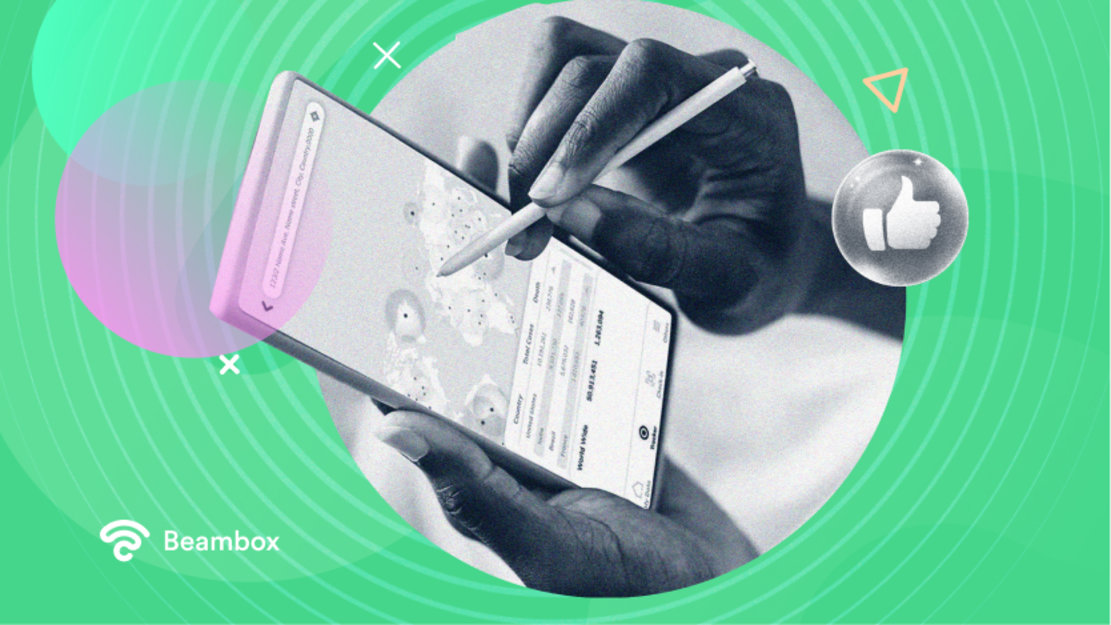Psychographic Marketing: How To Use It To Grow Your Business
Have you ever wondered how some businesses have an almost psychic ability to anticipate and fulfill their customer’s needs and desires? The secret lies in a powerful marketing tool known as psychographic marketing.
Whether you’re a small business owner, a marketing professional or an entrepreneur looking to take your business to the next level, understanding the power of psychographic marketing is the key to unlocking your customer’s desires and driving success.
So, let’s dive in and explore this fascinating topic together!
What Are Psychographics in Marketing?

You might be wondering, “What is psychographics in marketing?” Here is your answer.
Psychographics in marketing is the deep, underlying personality traits that drive a person’s behavior. They include the following attributes; attitudes, emotions, values, fears, interests, preferences, and beliefs.
Although similar, the psychographic segmentation approach differs from the one marketers use for behavioral marketing segmentation.
This form of information is far more potent than demographic and traditional marketing facts. It can help you understand your customers better to develop a truly effective marketing strategy.
Psychographic information enables you to target people with a more powerful message and connect with them more meaningfully.
Difference Between Psychographic Marketing and Demographic Marketing

One of the common mistakes people usually make is confusing psychographic marketing with demographic marketing. Let’s have a look at the distinction between these two terms.
Demographic Marketing: It targets consumers based on age, gender, income, geographic location, marital status, family size, and professional background. For example, you own a women’s shoe store in Seattle. You typically have a lot of female customers who are in their middle ages and earn a household income of between $50k to $75K.
This is because the customer profiles of demographic marketing include consumers with similar backgrounds, characteristics, or lifestyles.
Psychographic Marketing: This takes a different approach. Rather than segmenting consumers by general demographics, psychographic marketing views consumers based on their core beliefs and values.
Psychographic groups have specific preferences for clothing, work, material possessions, and education. This type of segmentation is more about attitude, personal preferences and personality.
Looking back at that women’s shoe shop in Seattle, you’ll notice that different shoes attract most customers. The older ones, however, are more likely to prefer shoes that can protect their joints from pain.
6 Psychographic Marketing Examples That Work

Psychographic marketing examples are always a handful. Let’s look at these examples and how companies employ them.
-
Lifestyle: An example of lifestyle psychographic marketing could be a luxury car brand targeting affluent individuals who enjoy outdoor activities like skiing, hiking, and camping. They could market their vehicles as the perfect choice for adventurous individuals who want to enjoy the great outdoors in style and comfort.
-
Values and Beliefs: A company that produces economically friendly products might target consumers who value sustainability and protecting the environment. They could use messaging highlighting the importance of reducing one’s carbon footprint and how their products contribute to a better future for the planet.
-
Personality: A cosmetic brand targeting extroverted individuals might use bright and bold packaging and marketing campaigns that focus on standing out and being noticed. They could promote their products as the perfect way for outgoing individuals to express themselves and showcase their personalities.
-
Attitudes: A company that offers financial planning services might target individuals who are conscious of risks and prioritize security and stability in their investments. They could use messaging highlighting the importance of careful planning and investing and how their services can help ensure a secure financial future.
-
Interests: A fitness brand targeting people who love running might use messaging emphasizing the freedom and joy of running or the physical and mental health benefits. They could also offer products related to running, like shoes, clothing, and accessories.
-
Behaviors: An online retailer might target customers who frequently make online purchases. They could use targeted ads and messaging highlighting the convenience and ease of online shopping and perks like free shipping and easy returns.
How To Conduct Psychographic Marketing Research
Psychographic marketing research is critical to truly understanding your target audience and connecting with them deeper. Unlike traditional demographic analysis, which looks at age, gender, or other similar characteristics, psychographic research digs into people’s attitudes, values, interests, and personality traits.
By conducting psychographic research, you can uncover the underlying motivations and emotions that drive your customers’ purchasing decisions. This will allow you to tailor the messaging of your marketing strategies to resonate with them genuinely.
Primary Research Method for Psychographic Marketing

Understanding your target audience’s psychographic profile is crucial for effective psychographic marketing. Primary research methods help you gather valuable insights into your customers’ values, beliefs, interests, attitudes, and behaviors.
By conducting primary research, you can create highly targeted and personalized marketing campaigns that resonate with your audience on a deeper level.
Let’s explore the primary research methods you can use to uncover psychographic information about your target audience.
-
Surveys: It is a common primary research method in psychographic marketing that involves collecting data from a large group of individuals using questionnaires. This method helps gather quantitative data about consumer preferences, behaviors, and attitudes. It also helps marketers better understand their target audience and create more effective marketing campaigns. Look at these 40 survey questions to help with your psychographic marketing.
-
Interviews: This is a primary research method in psychographic marketing and involves personal conversations between a researcher and a participant. This method helps gather qualitative data about consumer motivations, values, and beliefs and can help marketers gain deeper insights into their target audience. You can conduct interviews in person, over the phone, or online.
-
Focus Groups: This involves gathering a group of individuals to discuss a specific topic or product. This method helps collect qualitative data about consumer opinions, attitudes, and preferences. It can also help marketers test new products or ideas, identify consumer needs and pain points, and develop more effective marketing messaging. It’s flexible and convenient as one can conduct it in person or online.
Secondary Research Method for Psychographic Marketing

While primary research methods such as surveys and focus groups are effective, they can be expensive and waste time. This is where secondary research comes in handy, as it allows marketers to tap into existing data sources to gain insights into their audience without breaking the bank.
Let’s look at the secondary research method in psychographic marketing and explore how to use it to create effective marketing campaigns.
-
Social media analysis: This method analyzes data from social media platforms like Facebook, Instagram, and Twitter. Businesses can gain insights into their target audience’s behavior, attitudes, and interests by studying consumers’ posts, comments, and interactions. For example, a fashion brand might use social media analysis to understand its target demographic’s popular styles and trends.
-
Consumer reviews analysis: This analysis involves analyzing reviews and ratings on local review sites like Yelp or TripAdvisor. By studying consumer feedback, businesses can gain insights into what customers like and dislike about their offerings and identify areas for improvement. For example, a restaurant might analyze reviews on Yelp to determine which dishes are most popular and what customers think of their service.
-
Google Analytics: Analytics allows businesses to analyze website traffic and user behavior. By studying metrics like pageviews, bounce rate, and conversion rate, companies can gain insights into how users interact with their websites and identify opportunities for improvement. For example, an electronic commerce store might use Google Analytics to determine which products are most popular and which pages on their website are causing users to leave without purchasing.
How To Implement Psychographic Marketing
By understanding your customers’ psychological and behavioral traits, you can create more personalized and effective marketing campaigns for psychographic marketing.
Let’s dive into the steps you can take to implement psychographic marketing and take your marketing strategy to the next level.
Practice Psychographic Market Segmentation
In today’s crowded and competitive marketplace, it’s essential to understand your customer’s demographics and their values, beliefs, and lifestyles. This is where psychographic market segmentation comes in.
By practicing psychographic market segmentation, you can tailor your marketing messages and strategies to resonate with them on a deeper level.
How can you use it to improve your marketing efforts? You can do this by:
- Developing customer personas
- Creating psychographic profiles
Advertise and Plan Media Content for Psychographic Marketing
By understanding your audience’s values, beliefs, and interests, you can create more targeted and effective media content that resonates with them. This is fundamental for evergreen marketing.
These psychographic marketing tips on advertising and media content will help take your marketing strategy to the next level.
- Select media channels that align with psychographic profiles
- Develop ads that speak to the target audience
Benefits of Psychographic Marketing
Now that we’re all on the same page with the basics of psychographic marketing, you’re probably wondering how it can help you.
Here are some fantastic benefits.
-
Increased ROI: With psychographic marketing, you can reach out to more people and help them with their unique needs and problems. It will help you achieve a higher return on your investments.
-
Improved customer experience: Psychographic marketing is an effective tool for helping you better understand your customers to deliver an improved customer experience.
-
Enhanced brand loyalty: By better understanding your customers, you can create a better relationship with them. For example, you identify a psychographic profile for a group of your customers that shows that they value family. After you develop messaging that touches on this value, you can strengthen the relationship. Therefore, if you care about loyalty toward your business, use this type of segmentation.
-
Competitive edge: One of the most significant benefits of psychographic marketing is that it can help you attract a broader audience to your brand. For example, a luxury car brand targeting affluent people who like to travel will attract more customers than a luxury car brand targeting wealthy people who prefer to stay at home.
-
Enhanced sales conversion: It will help you reach out to the right people, with the right message, at the right time. For example, a luxury watch brand that targets adventurous individuals will be able to attract more customers than a luxury watch brand that targets an introverted individual.
-
Stronger marketing strategies: Psychographic marketing lets you determine what drives your customers’ purchasing decisions, allowing you to tailor your marketing strategies to address their unique needs.
Psychographic Segmentation Examples in Marketing

Here are some examples of companies that practiced psychographic marketing segmentation successfully
-
Uber: They wanted to make it easy for people to order a ride conveniently. By practicing psychographic marketing segmentation, they identified their target market as busy professionals who need a fast and reliable ride.
-
Nike: They focus on inspiring athletes to reach their goals. Through psychographic marketing segmentation, they identified their customers as people with a passion for sports but needing motivation. They then tailored their marketing messages to focus on pushing yourself to the limits and achieving your goals. This is why their guerrilla marketing initiatives are always brilliant.
-
Airbnb: Their goal is to make travel more affordable and accessible. They identified travelers seeking a cheap and unique experience through psychographic marketing segmentation. They then tailored their marketing strategies to meet those needs, and now they are the leader in the travel industry.
In conclusion, good psychographic marketing is crucial for any business looking to succeed in today’s competitive marketplace. You can create more personalized and effective marketing campaigns by understanding your customers’ values, beliefs, and lifestyles.
If you run a local business and you want to gather data seamlessly about your customer, you should take advantage of your free internet with a WiFi marketing software solution like Beambox.
Beambox can help you learn who are your actual customers, what they like, and how you can delight them. Moreover, with a social WiFI hotspot, you can automate marketing initiatives and secure your network. For example, you can run email marketing campaigns or manage the bandwidth allocation for each user connecting to your WiFi. However, there’s much more that you can do with Beambox, and you can try it for free for thirty days. Start your free trial now!
Get Started With Free WiFi Marketing
Beambox helps businesses like yours grow with data capture, marketing automation and reputation management.
Sign up for 30 days free


